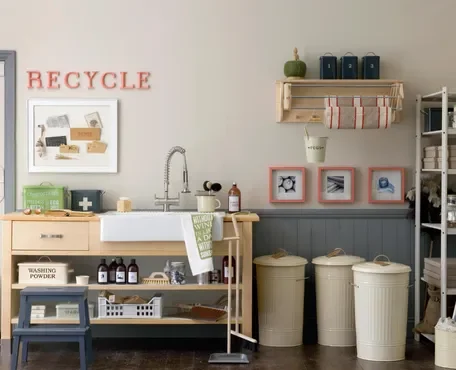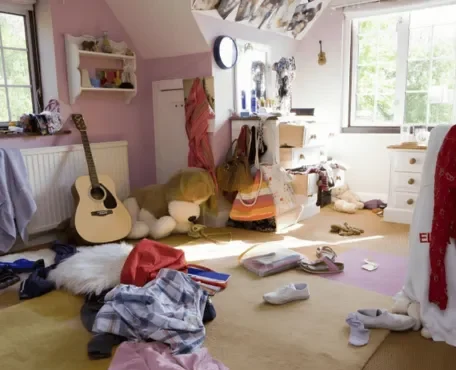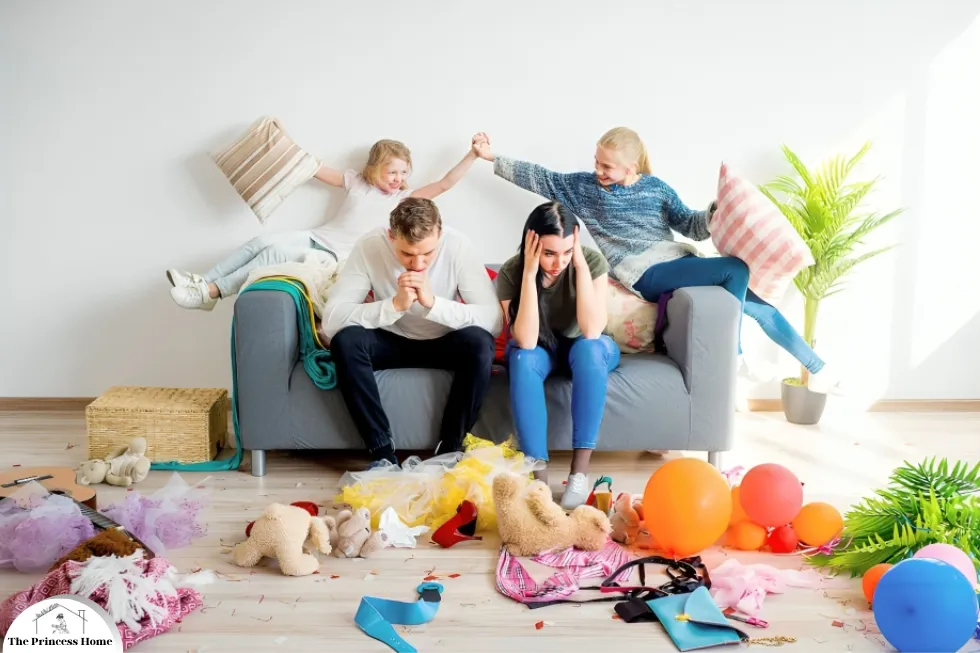
Clutter can be an unwelcome companion in our lives, creeping into our homes, workspaces, and even our digital environments. It not only leads to physical disorganization but also contributes to mental chaos, stress, and decreased productivity. Tackling clutter efficiently is a common goal for many individuals seeking a more organized and peaceful lifestyle. In this article, we will explore effective strategies to help you declutter your life in a time-efficient manner.
Tackling clutter in a time-efficient way is achievable with the right strategies and a committed mindset. Start by understanding the true cost of clutter, set clear goals, and apply the 4 D’s: dump, donate, digitize, and delegate. Take a room-by-room approach, use the 80/20 rule, and maintain a regular cleaning routine. Remember, clutter is not just about physical objects but extends to digital clutter and impulse buying. Embrace the process of letting go and savor the benefits of a clutter-free life, including reduced stress, increased productivity, and a greater sense of well-being. Your path to an organized and efficient life begins today!
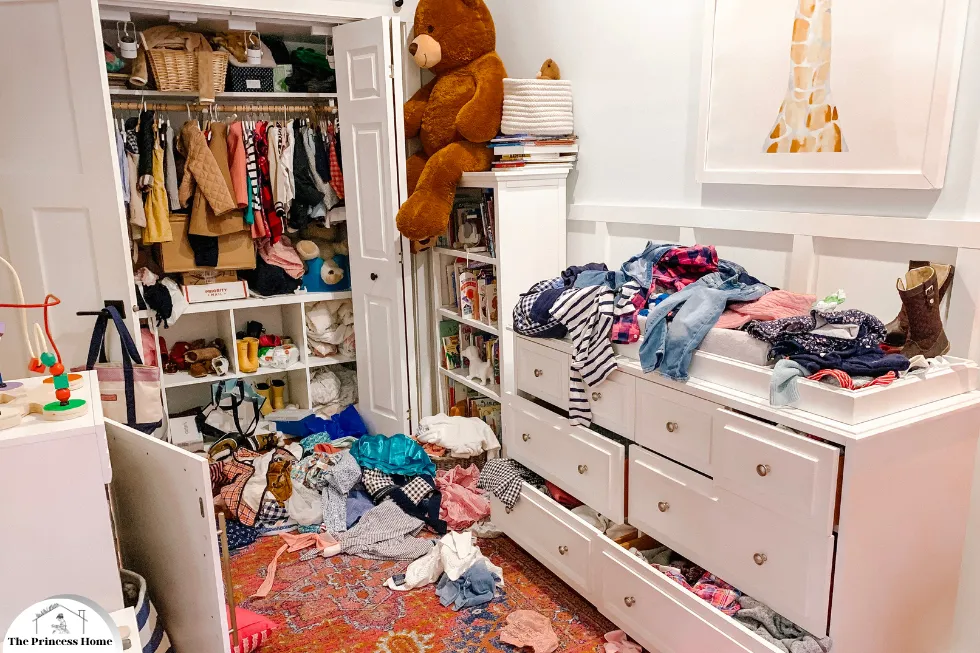
1.*Understanding the Cost of Clutter
Before we dive into the strategies for tackling clutter, it’s essential to understand the costs associated with it. Clutter can lead to wasted time, increased stress, and hinder your overall well-being. Acknowledging these costs can provide you with the motivation to take action. understanding the costs of clutter is crucial for motivating oneself to address it. Clutter isn’t just about having a messy space; it can have tangible and intangible consequences on various aspects of our lives.
Let’s break down some of these costs:
1.Wasted Time:
Clutter makes it difficult to find things, leading to wasted time searching for items we need. Whether it’s keys, important documents, or tools, the more clutter we have, the more time we spend looking for them.
2.Increased Stress:
Living or working in a cluttered environment can lead to increased stress levels. The visual chaos can overwhelm our senses, making it harder to relax or focus on tasks. Clutter can also create a feeling of being constantly behind or disorganized, adding to our stress.
3.Reduced Productivity:
Clutter can hamper productivity by creating distractions and making it harder to concentrate. It’s challenging to work efficiently in a cluttered space where there’s no clear surface to work on or where important tools are buried under piles of clutter.
4.Financial Costs:
Clutter can lead to financial costs in various ways. For example, if clutter causes us to misplace bills or important documents, we may incur late fees or miss out on opportunities. Additionally, if clutter damages items or prevents us from properly caring for them, we may need to replace them sooner than expected.
5.Impact on Well-being:
A cluttered environment can negatively impact our overall well-being. It can contribute to feelings of overwhelm, anxiety, and even shame. Conversely, a tidy and organized space can promote feelings of calmness, control, and satisfaction.
By recognizing these costs, individuals can become more motivated to tackle clutter and create a space that supports their well-being and productivity.
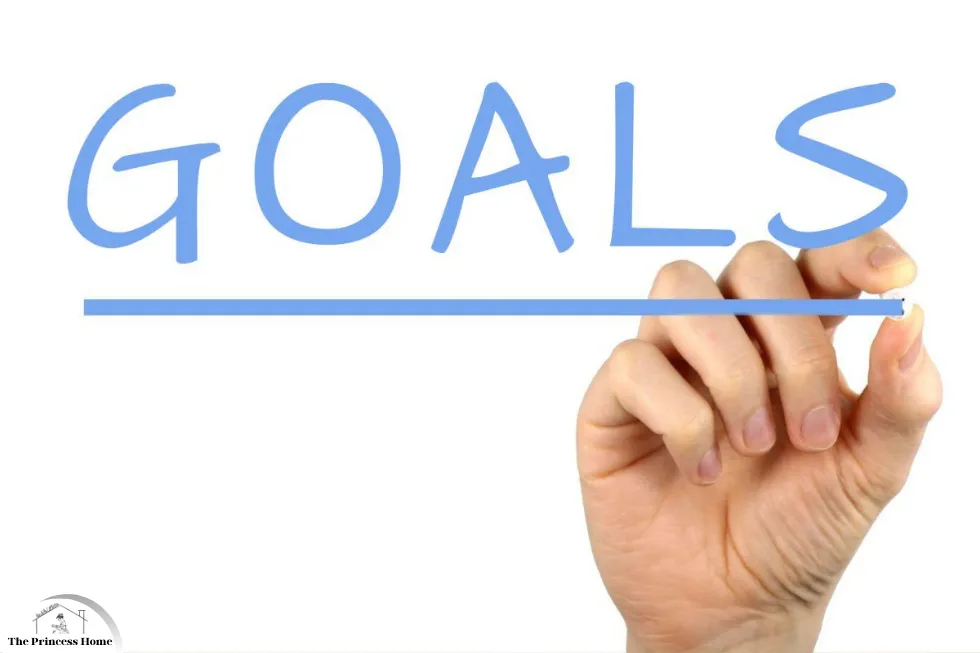
2.*Set Clear Goals and Priorities
Begin your journey to a clutter-free life by setting clear goals and priorities. Determine what spaces or areas you want to declutter and establish a realistic timeline for achieving your goals. Prioritize the areas that are causing you the most stress or hindering your daily life. Setting clear goals and priorities is indeed the first step towards achieving a clutter-free life.
Here’s a breakdown of how to go about it:
1.Identify Problem Areas:
Take a look around your living or working space and identify the areas that are cluttered or causing you the most stress. This could be a specific room, such as the kitchen or home office, or it could be certain areas within a room, like closets or cabinets.
2.Establish Your Why:
Understand why decluttering is important to you. Is it to create a more peaceful living environment, improve productivity, or simply to regain control over your space? Having a clear understanding of your motivations will help you stay committed to your decluttering goals.
3.Set Specific Goals:
Once you’ve identified problem areas and understand your motivations, set specific decluttering goals. For example, you might aim to declutter and organize your entire kitchen within the next two weeks or declutter your wardrobe by donating or selling clothes you no longer wear.
4.Prioritize Your Goals:
It’s essential to prioritize your decluttering goals based on urgency and impact. Start with the areas that are causing you the most stress or hindering your daily life. This could be a cluttered workspace that’s affecting your productivity or a messy entryway that’s making it difficult to find your keys every morning.
5.Establish a Realistic Timeline:
Be realistic about the time it will take to achieve your decluttering goals. Break down larger tasks into smaller, manageable steps and allocate time each day or week to work on decluttering. Setting a timeline will help you stay focused and track your progress.
6.Celebrate Milestones:
As you make progress towards your decluttering goals, celebrate your achievements along the way. Whether it’s completing a decluttering project or maintaining an organized space for a certain period, acknowledge your efforts and reward yourself for staying committed to your goals.
By setting clear goals and priorities, you’ll have a roadmap to guide your decluttering journey and stay motivated along the way.
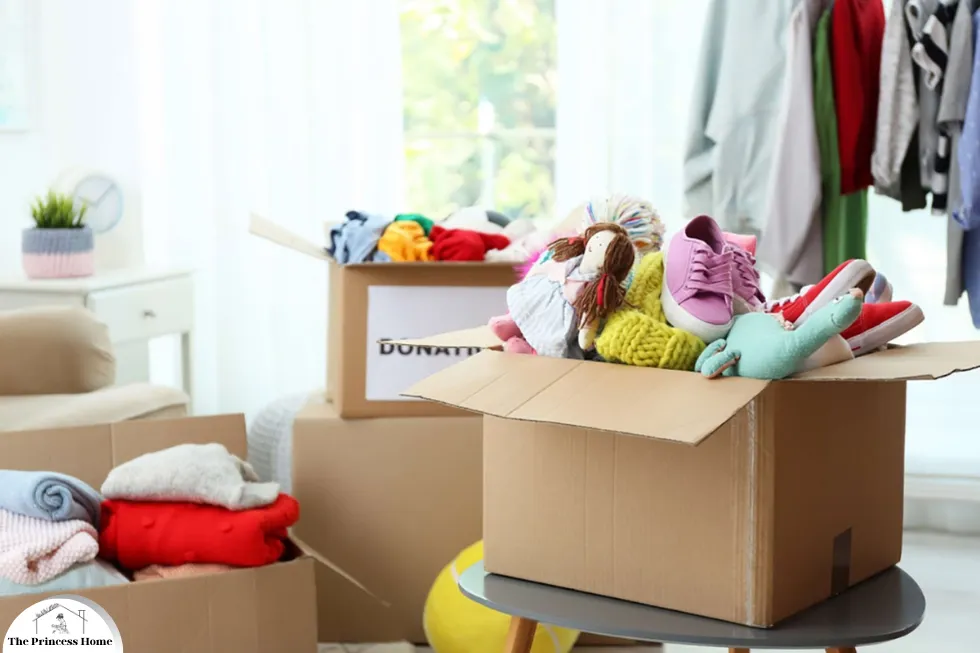
3.*The 4 D’s: Decluttering Principles
When you start decluttering, remember the 4 D’s:
1.Declutter:
Start by sorting through your belongings and deciding what you want to keep and what you want to discard. Ask yourself if each item serves a purpose or brings you joy. If not, it may be time to let it go.
2.Donate:
Items that are in good condition but no longer serve a purpose for you can be donated to charity. This includes clothing, household items, books, and more. Donating allows these items to be repurposed and enjoyed by someone else while also reducing clutter in your own space.
3.Dispose:
For items that are no longer usable or in poor condition, it may be necessary to dispose of them. This could include broken or damaged items that cannot be repaired, expired products, or items that are no longer safe to use.
4.Delegate:
Sometimes, you may come across items that you’re unsure about or that belong to someone else. In these cases, it may be appropriate to delegate the decision-making process. This could involve asking family members or roommates for their input or seeking professional advice, such as from a organizer or decluttering coach.
By applying the 4 D’s, you can systematically declutter your space, make decisions with confidence, and create a more organized and functional environment.

4.*Declutter Room by Room
Take a systematic approach to decluttering by focusing on one room or area at a time. Starting small and working your way through your space will prevent overwhelm and help you see tangible progress. Decluttering room by room is an effective approach to tackling clutter in a systematic and manageable way.
Here’s how to do it:
1.Choose a Starting Point:
Decide which room or area you want to declutter first. It’s often helpful to begin with a smaller or less cluttered space to build momentum. You could start with a bedroom, a bathroom, or even a closet.
2.Gather Supplies:
Before you begin decluttering, gather any supplies you may need, such as storage bins, trash bags, cleaning supplies, and labeling materials. Having everything on hand will make the process more efficient.
3.Set Clear Goals:
Establish specific goals for the room or area you’re decluttering. This could include decluttering and organizing a closet, clearing off surfaces in the living room, or creating a functional workspace in the home office.
4.Declutter Methodically:
Start decluttering one section of the room at a time. Take everything out of drawers, shelves, or closets and sort items into categories such as keep, donate, toss, or relocate. Be honest with yourself about what you truly need and use regularly.
5.Organize as You Go:
As you declutter, take the opportunity to organize the items you’re keeping. Invest in storage solutions such as bins, baskets, and shelves to help keep things tidy and easily accessible.
6.Dispose of Unwanted Items:
Once you’ve sorted through everything, dispose of items you no longer need or want. Donate usable items to charity, recycle if possible, and dispose of any trash responsibly.
7.Evaluate and Adjust:
After decluttering a room, take a step back and evaluate the results. Does the space feel more open and organized? Are there any additional adjustments or improvements you can make? Use this feedback to refine your approach as you move on to decluttering other areas.
8.Repeat the Process:
Continue decluttering room by room until you’ve addressed all the spaces in your home. Remember to pace yourself and take breaks as needed to prevent burnout.
By taking a systematic approach to decluttering, you’ll be able to see tangible progress and create a more organized and functional living space.
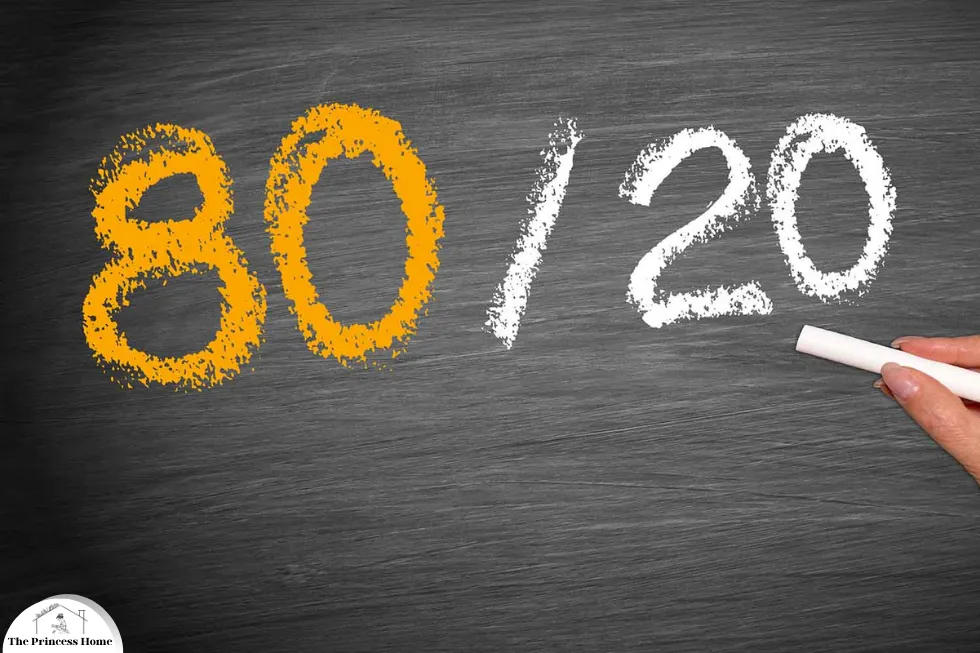
5.*Use the 80/20 Rule
The Pareto Principle, or the 80/20 rule, suggests that we use 20% of our belongings 80% of the time. Identify these essential items and prioritize them, while reducing or eliminating the less frequently used items. The 80/20 rule, also known as the Pareto Principle, can be a powerful tool for decluttering and organizing.
Here’s how to apply it:
1.Identify Essential Items:
Start by identifying the 20% of your belongings that you use 80% of the time. These are the items that are essential to your daily life or that bring you the most value and joy. They could include things like your favorite clothes, kitchen essentials, work tools, or personal electronics.
2.Prioritize Essential Items:
Once you’ve identified your essential items, prioritize them in your living space. Ensure they are easily accessible and well-organized so that you can quickly find and use them when needed. Consider investing in storage solutions that make it easy to access and store these items.
3.Evaluate Less Frequently Used Items:
Take a critical look at the remaining 80% of your belongings—the items that you use only 20% of the time. Ask yourself if these items truly add value to your life or if they are simply taking up space. Be honest about whether you really need or want these items.
4.Reduce or Eliminate Less Used Items:
For items that you rarely use or that no longer serve a purpose, consider reducing or eliminating them from your space. This could involve donating, selling, or recycling items that are in good condition but no longer needed. For items that are no longer usable, dispose of them responsibly.
5.Streamline Your Space:
Once you’ve decluttered and prioritized your belongings according to the 80/20 rule, take a step back and admire your streamlined space. Enjoy the benefits of having a more organized and functional environment where the items you use most are readily available.
6.Regularly Reassess:
Keep in mind that decluttering is an ongoing process. Regularly reassess your belongings to ensure that you’re only holding onto items that add value to your life. As your needs and preferences change over time, so too should your possessions.
By applying the 80/20 rule to your decluttering efforts, you can focus your time and energy on the items that matter most to you while reducing or eliminating the clutter that tends to accumulate over time.
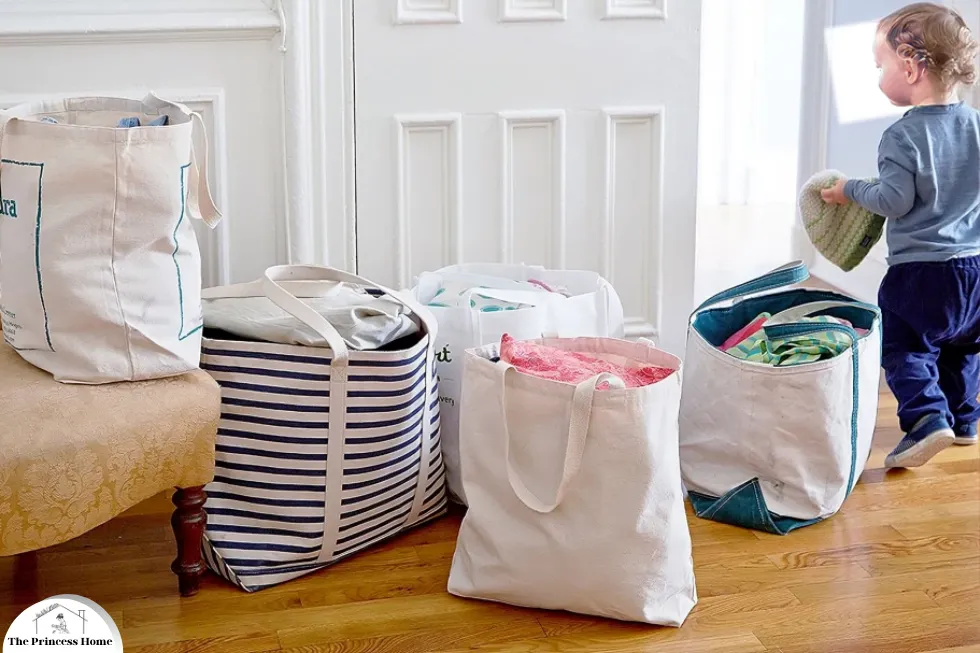
6.*Organize and Sort
After decluttering, it’s crucial to organize and sort the remaining items. Invest in storage solutions, such as bins, shelves, and labels, to keep things in their designated places. Proper organization ensures that clutter doesn’t return. organizing and sorting are essential steps in maintaining a clutter-free space after decluttering.
Here’s how to approach it:
1.Assess Your Needs:
Before investing in storage solutions, assess your space and the types of items you need to organize. Consider factors such as the size of your space, the types of items you have, and your organizational preferences.
2.Choose Appropriate Storage Solutions:
Invest in storage solutions that fit your needs and space constraints. This could include bins, baskets, shelves, drawers, storage cubes, hooks, and hanging organizers. Choose containers and organizers that are sturdy, functional, and aesthetically pleasing.
3.Categorize and Label:
Sort your remaining items into categories based on their function, usage, or frequency of use. Label containers and shelves to make it easy to find and access items when needed. Clear, visible labels help maintain organization over time and prevent items from being misplaced.
4.Maximize Vertical Space:
Make use of vertical space by installing shelves, racks, or wall-mounted organizers. This helps maximize storage capacity and keeps items off the floor, making the space feel more open and organized.
5.Create Zones:
Divide your space into zones based on the activities or functions that take place there. For example, create a designated workspace in your home office, a grooming station in the bathroom, or a play area in the living room. Organize items within each zone according to their specific use.
6.Establish Daily Habits:
Encourage household members to establish daily habits that support organization and cleanliness. This could include putting items back in their designated places after use, doing a quick tidy-up at the end of each day, or scheduling regular decluttering sessions to prevent clutter from accumulating.
7.Regular Maintenance:
Schedule regular maintenance sessions to ensure that your space remains organized over time. This could involve decluttering and reorganizing as needed, deep cleaning surfaces and storage areas, and evaluating the effectiveness of your organizational systems.
By investing in appropriate storage solutions, categorizing and labeling items, maximizing vertical space, creating zones, establishing daily habits, and maintaining regular upkeep, you can ensure that your space remains organized and clutter-free long after the initial decluttering process.

7.*Develop a Regular Cleaning Routine
A clutter-free life requires ongoing maintenance. Develop a regular cleaning routine to prevent clutter from accumulating again. Set aside specific times for tidying up and sticking to a schedule. developing a regular cleaning routine is essential for maintaining a clutter-free and organized living space.
Here’s how to create an effective cleaning routine:
1.Establish Cleaning Tasks:
Start by making a list of all the cleaning tasks that need to be done regularly in your home. This could include vacuuming, dusting, mopping floors, wiping down surfaces, cleaning bathrooms, doing laundry, and so on. Break down these tasks into daily, weekly, and monthly categories.
2.Create a Schedule:
Once you have a list of cleaning tasks, create a cleaning schedule that works for you and your household. Consider your daily routines, work schedules, and any other commitments you have. Allocate specific days and times for each cleaning task based on its frequency and importance.
3.Be Realistic:
Be realistic about what you can accomplish within your cleaning routine. Don’t overload yourself with too many tasks or unrealistic expectations. Start with a manageable schedule and adjust as needed based on your time and energy levels.
4.Set Priorities:
Prioritize cleaning tasks based on what’s most important to you and your household. Focus on high-traffic areas and spaces that tend to accumulate clutter more quickly. By prioritizing, you can ensure that you’re spending your time and energy where it matters most.
5.Stick to the Schedule:
Once you’ve established a cleaning routine, stick to it as much as possible. Treat your cleaning schedule like any other appointment or commitment and make it a priority in your daily or weekly routine. Consistency is key to preventing clutter from accumulating again.
6.Delegate Tasks:
Don’t be afraid to delegate cleaning tasks to other members of your household. Assign age-appropriate tasks to children or roommates and work together as a team to keep your home clean and organized.
7.Be Flexible:
Life can be unpredictable, so be flexible with your cleaning routine. If you miss a cleaning session or need to adjust your schedule due to other commitments, don’t stress about it. Simply reschedule tasks as needed and continue with your routine when you can.
By developing a regular cleaning routine, you can prevent clutter from accumulating again and maintain a clean, organized, and clutter-free living space in the long term.
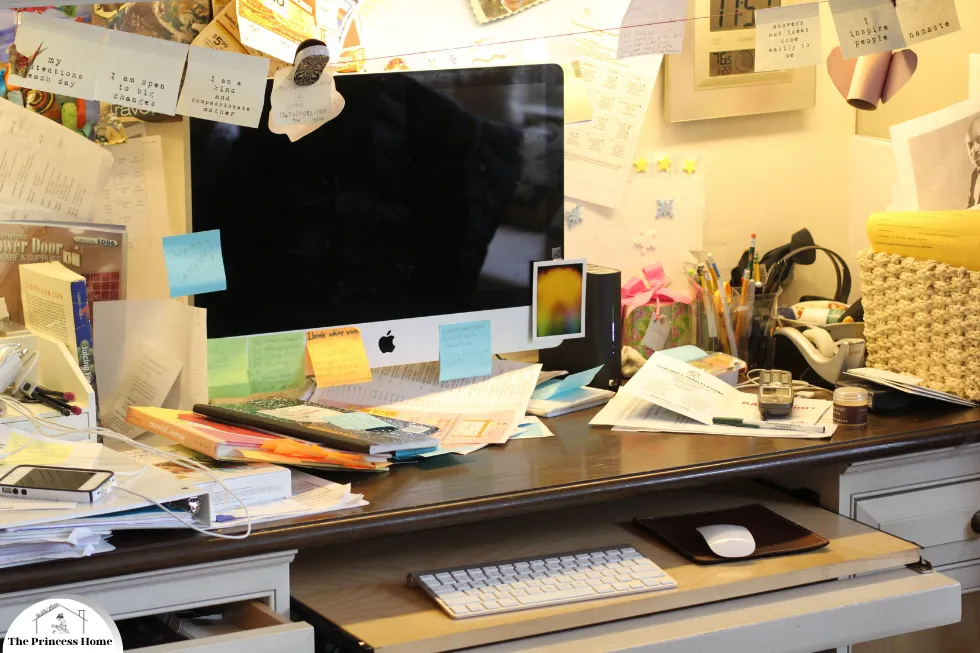
8.*Digital Decluttering
In our digital age, clutter can extend to our digital lives. Regularly clean out your emails, files, and apps. Unsubscribe from newsletters, delete unused apps, and organize your digital files into folders. digital clutter can be just as overwhelming and distracting as physical clutter.
Here are some tips for digital decluttering:
1.Email Cleanup:
Start by cleaning out your email inbox. Unsubscribe from newsletters and promotional emails that you no longer find useful. Delete or archive old emails that you no longer need, and organize the remaining emails into folders based on categories or priorities.
2.File Management:
Take some time to declutter and organize your digital files. Go through your documents, photos, and other files and delete any that are outdated, duplicates, or no longer needed. Organize the remaining files into folders with clear and descriptive names to make them easy to find when you need them.
3.App Purge:
Review the apps on your devices and delete any that you no longer use or need. Many of us accumulate a lot of apps over time, but they can take up valuable storage space and clutter your device’s home screen. Be ruthless and only keep the apps that serve a purpose or bring you value.
4.Desktop Cleanup:
Clean up your computer desktop by removing any unnecessary icons or files. Use folders to organize files and keep your desktop clutter-free. A cluttered desktop can slow down your computer and make it difficult to find the files you need.
5.Digital Photos and Videos:
Sort through your digital photos and videos and delete any duplicates, blurry shots, or images that you no longer want to keep. Organize the remaining photos into albums or folders to make them easier to browse and enjoy.
6.Cloud Storage:
If you use cloud storage services like Google Drive, Dropbox, or iCloud, take some time to clean up your storage space. Delete any files or folders that you no longer need and organize the remaining files into folders to keep them organized and easy to access.
7.Set Regular Maintenance:
Make digital decluttering a regular part of your routine. Schedule time on a weekly or monthly basis to review and clean out your digital files, emails, and apps. By staying on top of digital clutter regularly, you can prevent it from becoming overwhelming in the future.
By regularly cleaning out your digital clutter, you can reduce distractions, improve productivity, and make it easier to find the information you need when you need it.
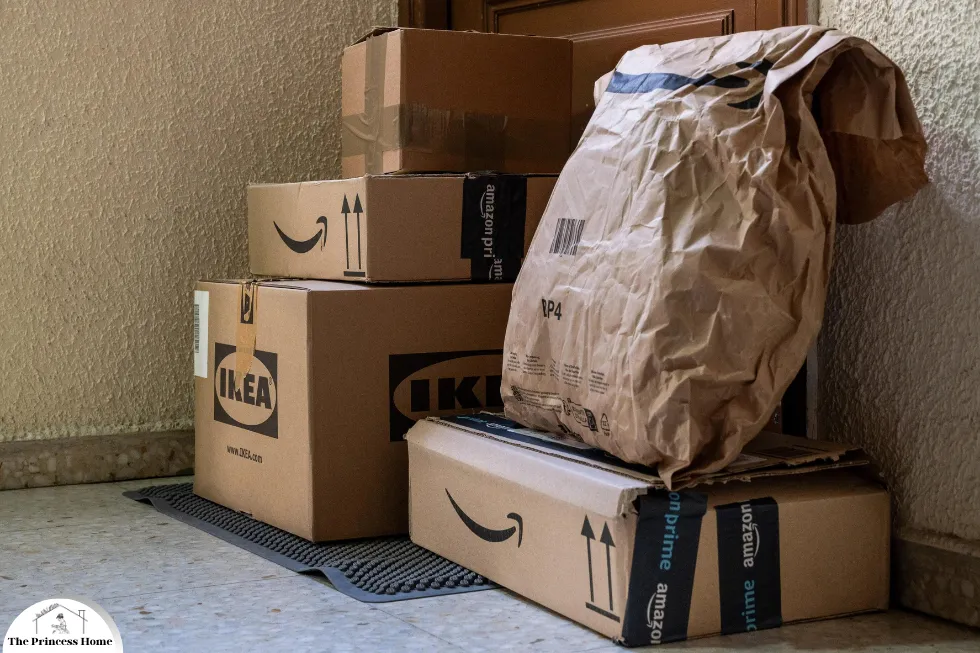
9.*Avoid Impulse Buying
To prevent future clutter, resist the urge to make impulse purchases. Before buying something, ask yourself if it truly adds value to your life and if you have a designated place for it. Avoiding impulse buying is a key strategy for preventing future clutter and maintaining a clutter-free lifestyle.
Here are some tips to help you resist the urge to make impulse purchases:
1.Practice Mindfulness:
Before making a purchase, take a moment to pause and consider whether you truly need or want the item. Avoid making decisions on impulse and instead, practice mindfulness by reflecting on whether the purchase aligns with your values and goals.
2.Set a Budget:
Establish a budget for discretionary spending and stick to it. Having a set budget can help you make more intentional purchasing decisions and prevent impulse buying that can lead to clutter.
3.Make a Shopping List:
Before going shopping, make a list of the items you actually need to purchase. Stick to your list and avoid browsing or wandering aimlessly around stores, which can increase the likelihood of making impulse purchases.
4.Wait Before Buying:
Implement a waiting period before making non-essential purchases. Give yourself time to think about whether you truly need or want the item. This can help you avoid impulse buying and ensure that you’re making informed decisions.
5.Consider the Cost per Use:
Before buying something, consider the value it will bring to your life in relation to its cost. Calculate the cost per use by dividing the price of the item by the number of times you expect to use it. This can help you determine whether the purchase is worth it in the long run.
6.Avoid Sales and Discounts:
While sales and discounts can be tempting, they can also lead to impulse buying. Avoid shopping sales unless you have a specific item on your list that you planned to purchase. Remember that saving money on unnecessary purchases is better than spending money on items you don’t need.
7.Have a Designated Place:
Before purchasing an item, consider whether you have a designated place for it in your home. Avoid buying items that you don’t have space for or that will contribute to clutter. Keeping your space organized and clutter-free will help you appreciate and enjoy the items you already own.
By practicing mindfulness, setting a budget, making shopping lists, waiting before buying, considering the cost per use, avoiding sales and discounts, and ensuring you have a designated place for items, you can resist the urge to make impulse purchases and prevent future clutter.

10.*Seek Professional Help
If you’re feeling overwhelmed or if your clutter situation is severe, consider enlisting the help of a professional organizer. They can offer expertise, guidance, and strategies to streamline the process. Seeking professional help from a certified organizer or decluttering expert can be immensely beneficial, especially if you’re feeling overwhelmed or if your clutter situation seems daunting.
Here’s how a professional organizer can assist you:
1.Expertise and Guidance:
Professional organizers have the knowledge and expertise to assess your clutter situation objectively. They can help you identify the underlying causes of clutter, develop personalized decluttering strategies, and create sustainable organizational systems tailored to your needs and lifestyle.
2.Streamlined Process:
A professional organizer can streamline the decluttering process, making it more efficient and less overwhelming. They can provide structure and guidance, helping you tackle clutter one step at a time and stay focused on your goals.
3.Customized Solutions:
Every individual and living space is unique, and a professional organizer can offer customized solutions that address your specific challenges and preferences. Whether you need help decluttering a single room, downsizing for a move, or organizing your entire home, a professional organizer can tailor their approach to meet your needs.
4.Accountability and Support:
Working with a professional organizer provides accountability and support throughout the decluttering process. They can offer encouragement, motivation, and practical assistance, helping you stay on track and overcome obstacles along the way.
5.Stress Reduction:
Clutter can contribute to feelings of stress, overwhelm, and anxiety. By enlisting the help of a professional organizer, you can alleviate some of this stress and reclaim control over your living space. A professional organizer can help create a calming and harmonious environment that promotes well-being and peace of mind.
6.Long-Term Results:
Professional organizers focus on creating sustainable organizational systems that promote lasting change. By implementing practical solutions and teaching valuable organizing skills, they empower you to maintain a clutter-free and organized space long after their services are complete.
Whether you’re dealing with clutter in your home, office, or digital space, a professional organizer can provide invaluable assistance and support. Don’t hesitate to reach out for help if you’re feeling overwhelmed or if you’re ready to take control of your clutter once and for all.
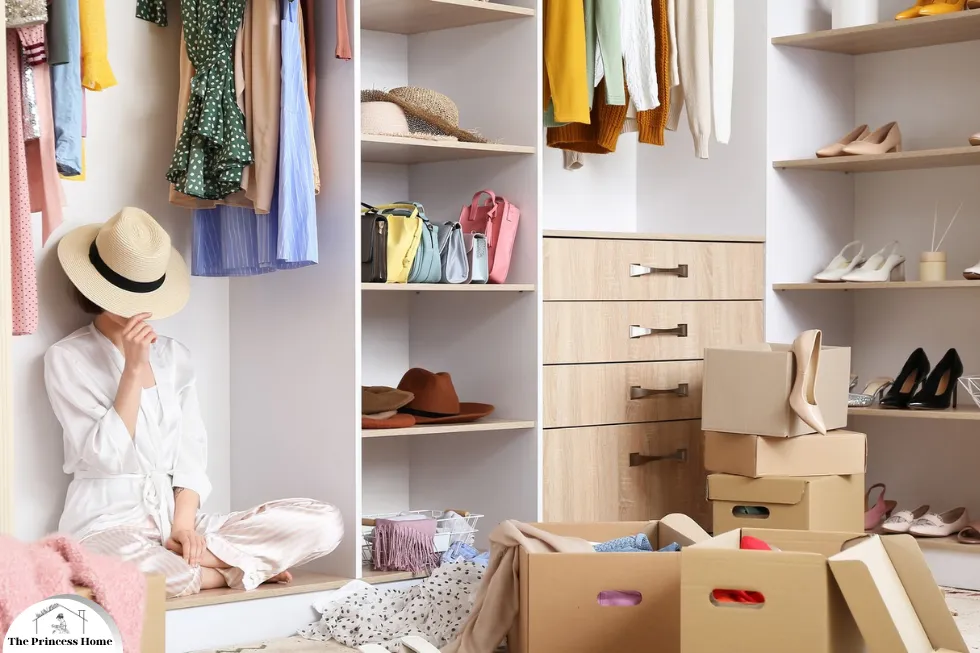
11.*Learn to Let Go
One of the most challenging aspects of decluttering is letting go of sentimental items or things that we believe we might need in the future. Practice detachment and focus on the freedom and peace a clutter-free life can bring.Learning to let go of sentimental items and things we believe we might need in the future can indeed be one of the most challenging aspects of decluttering.
Here are some tips to help you practice detachment and embrace the freedom and peace that a clutter.
1.Reflect on the Purpose:
Before holding onto an item for sentimental reasons or because you think you might need it in the future, take a moment to reflect on its purpose and significance in your life. Ask yourself if the item truly adds value to your present life and if it aligns with your goals and priorities.
2.Focus on the Present:
Practice living in the present moment and letting go of attachments to the past or worries about the future. Recognize that holding onto unnecessary items can weigh you down and prevent you from fully enjoying the present moment and creating space for new experiences.
3.Embrace Minimalism:
Embrace the principles of minimalism by focusing on quality over quantity and prioritizing experiences and relationships over material possessions. Letting go of excess belongings can lead to a greater sense of freedom, clarity, and fulfillment in your life.
4.Express Gratitude:
Before letting go of sentimental items, take a moment to express gratitude for the memories and experiences associated with them. Acknowledge the role that these items have played in your life and the lessons they have taught you. By honoring the past, you can let go with greater ease and openness to new possibilities.
5.Set Limits:
Establish clear boundaries and limits for the number of sentimental items or things you keep for future use. Create designated spaces or containers for these items and commit to only keeping what can fit within those boundaries. This can help prevent clutter from accumulating and make it easier to let go when necessary.
6.Practice Detachment:
Cultivate a mindset of detachment by recognizing that true happiness and fulfillment come from within, rather than from external possessions. Letting go of attachments to material things can free up mental and emotional space for more meaningful pursuits and connections.
7.Celebrate Progress:
Celebrate your progress and successes along the decluttering journey, no matter how small. Each item you let go of represents a step towards greater freedom and peace of mind. By acknowledging your efforts and accomplishments, you can stay motivated and committed to your decluttering goals.
By practicing detachment and focusing on the freedom and peace that a clutter-free life can bring, you can overcome the challenges of letting go and create a more intentional and fulfilling living space.
Continuing from where we left off, let’s explore more strategies and insights on how to tackle clutter in a time-efficient way:
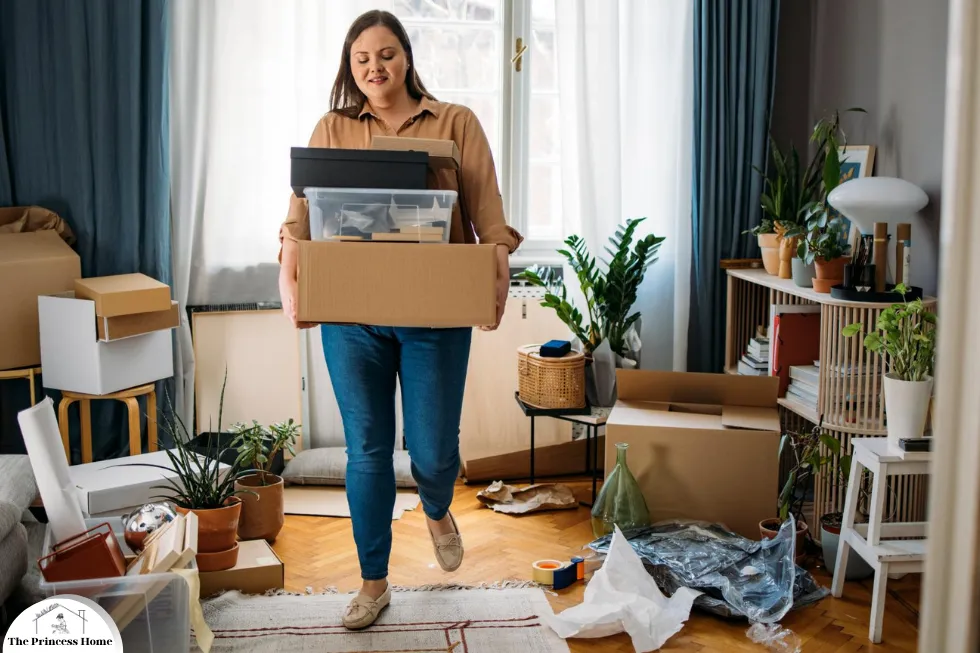
12.*Embrace Minimalism
Minimalism is a lifestyle that focuses on simplicity and reducing material possessions to the essentials. By embracing minimalism, you not only declutter your physical space but also experience mental clarity and reduced decision fatigue. Consider adopting a minimalist approach to your possessions and lifestyle. Embracing minimalism can indeed offer numerous benefits, both tangible and intangible.
Here’s how adopting a minimalist approach to your possessions and lifestyle can enhance your life:
1.Simplicity:
Minimalism encourages you to simplify your life by reducing clutter and focusing on the essentials. By decluttering your physical space and possessions, you can create a more streamlined and organized environment that promotes calmness and clarity.
2.Reduced Stress:
A clutter-free environment can lead to reduced stress levels. Minimalism helps you eliminate distractions and excess belongings, allowing you to focus on what truly matters and find peace amidst the chaos of modern life.
3.Increased Freedom:
Embracing minimalism can free you from the burden of excessive material possessions. By letting go of the need to accumulate more stuff, you can experience a sense of liberation and freedom to live more authentically and in alignment with your values.
4.Improved Finances:
Minimalism encourages mindful consumption and spending habits. By prioritizing quality over quantity and only purchasing what you truly need or value, you can save money and avoid the trap of consumerism.
5.Environmental Benefits:
Minimalism is inherently more sustainable and environmentally friendly. By consuming less and reducing waste, you can minimize your ecological footprint and contribute to a healthier planet for future generations.
6.Enhanced Creativity:
A clutter-free space can stimulate creativity and inspiration. Minimalism encourages you to surround yourself only with items that inspire and uplift you, creating a conducive environment for creativity and innovation.
7.Greater Focus:
Minimalism can help reduce decision fatigue by simplifying your choices. With fewer possessions and distractions, you can focus your time and energy on activities and pursuits that align with your goals and priorities.
8.Enhanced Well-being:
Overall, embracing minimalism can lead to greater overall well-being. By decluttering your physical space and simplifying your lifestyle, you can experience increased mental clarity, improved relationships, and a deeper sense of contentment and fulfillment.
Whether you’re looking to declutter your home, simplify your lifestyle, or cultivate a more mindful approach to consumption, embracing minimalism can offer numerous benefits that extend far beyond your physical possessions. By prioritizing simplicity, clarity, and authenticity, you can create a more meaningful and fulfilling life.
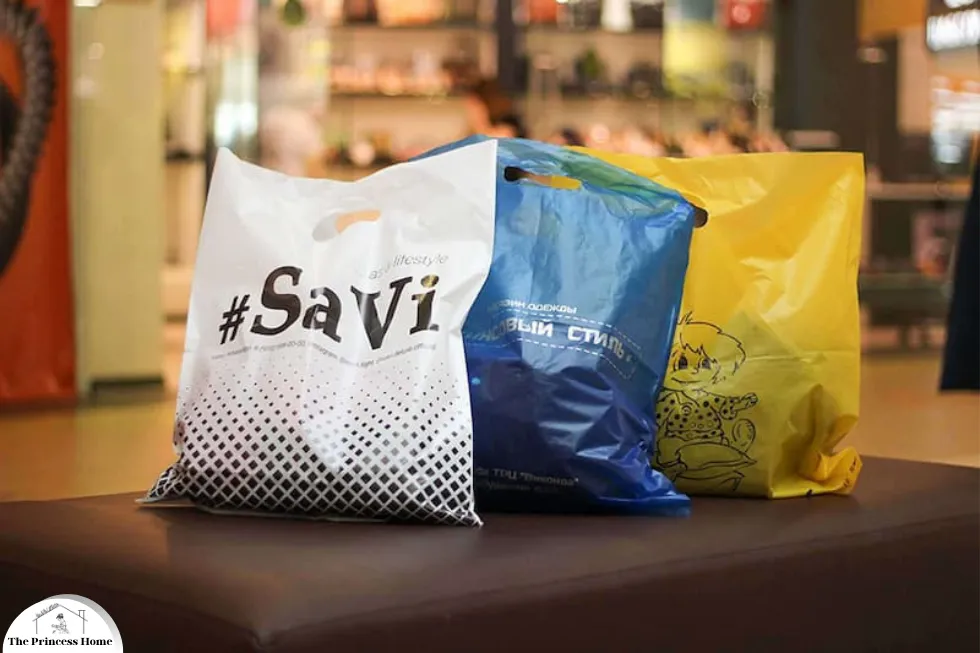
13.*Practice the “One In, One Out” Rule
To prevent clutter from piling up, implement the “one in, one out” rule. Whenever you acquire a new item, commit to removing one item of similar size or function. This rule encourages you to be mindful of your possessions and helps maintain a balanced environment. The “one in, one out” rule is an effective strategy for preventing clutter from accumulating over time and maintaining a balanced living environment.
Here’s how to implement it:
1.Mindful Consumption:
Before acquiring a new item, pause and consider whether you truly need it and how it will fit into your existing space and lifestyle. By being mindful of your consumption habits, you can avoid unnecessary purchases and reduce the risk of clutter.
2.Commit to Balance:
When you bring a new item into your home, commit to removing one item of similar size or function. This could involve donating, selling, recycling, or discarding the item, depending on its condition and usefulness.
3.Prioritize Quality:
Focus on acquiring high-quality items that add value to your life and are built to last. Investing in fewer, but better-made possessions can help you avoid the need for constant replacements and reduce clutter in the long run.
4.Regular Assessments:
Periodically assess your belongings to identify items that are no longer serving a purpose or bringing you joy. Use these opportunities to declutter and make space for new acquisitions that align with your current needs and preferences.
5.Stay Consistent:
Make the “one in, one out” rule a consistent practice in your daily life. Whether you’re shopping for clothing, household items, or gadgets, apply the rule consistently to maintain a balanced and clutter-free environment.
6.Adjust as Needed:
Be flexible and adjust the rule as needed based on your evolving lifestyle and circumstances. There may be times when you need to temporarily suspend the rule or make exceptions, such as during major life events or transitions.
By implementing the “one in, one out” rule, you can cultivate mindful consumption habits, prevent clutter from accumulating, and maintain a harmonious living space that reflects your values and priorities.
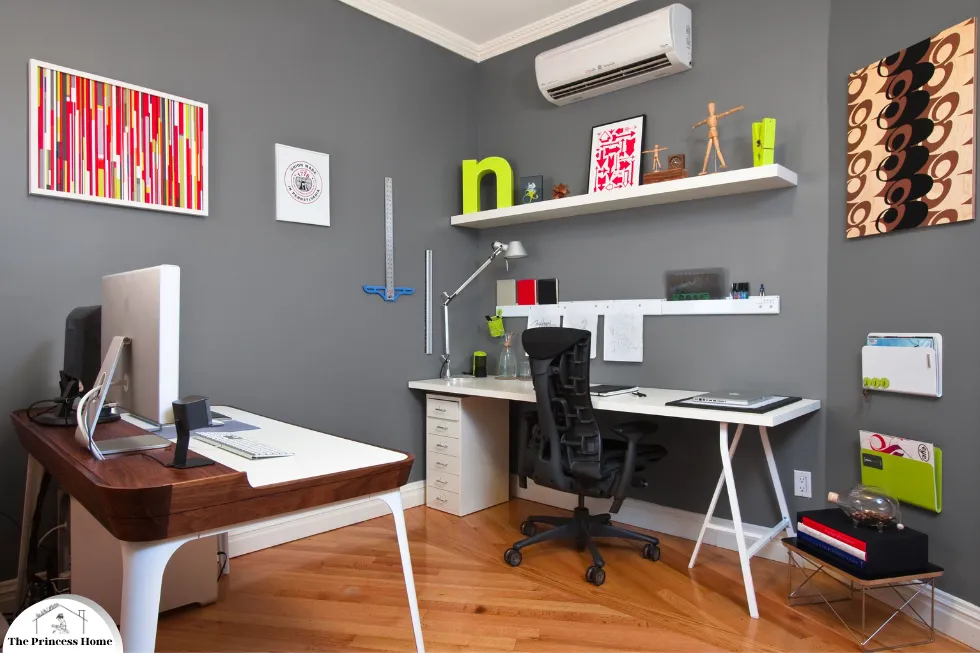
14.*Create a Clutter-Free Workspace
A clutter-free workspace is essential for productivity and focus. Organize your desk, declutter your computer desktop, and maintain a clean and organized workspace to enhance your efficiency. A tidy workspace can help clear your mind and increase your ability to concentrate. Creating a clutter-free workspace is crucial for maximizing productivity and fostering creativity.
Here are some steps to help you achieve a clutter-free workspace:
1.Clear Your Desk:
Start by decluttering your desk surface. Remove any items that don’t belong there or aren’t essential for your work. Keep only the items you use frequently within arm’s reach, such as your computer, phone, notebook, and pens.
2.Organize Supplies:
Organize your office supplies in designated containers or drawers to keep them tidy and easily accessible. Use organizers such as pen holders, file trays, and desk organizers to keep your supplies neatly arranged.
3.Manage Cables:
Tackle cable clutter by using cable management solutions such as cable clips, cable sleeves, or cable trays to keep wires and cables organized and out of sight. This not only improves the aesthetics of your workspace but also reduces the risk of tripping hazards.
4.Declutter Your Computer Desktop:
Just like your physical desk, your computer desktop can also become cluttered with icons and files. Take some time to declutter your computer desktop by organizing files into folders and deleting any unnecessary shortcuts or files.
5.Create Filing Systems:
Implement a filing system for paper documents to prevent them from piling up on your desk. Use file folders, binders, or filing cabinets to organize documents by category, project, or priority. Consider digitizing paper documents to reduce physical clutter further.
6.Designate a Storage Area:
Designate a specific area or cabinet for storing items that aren’t used daily, such as office supplies, reference materials, or personal items. Keep these items out of sight to maintain a clean and clutter-free workspace.
7.Establish Cleaning Habits:
Make tidying up your workspace a regular part of your routine. Spend a few minutes at the end of each day clearing off your desk, filing away documents, and organizing supplies. A clean workspace at the start of each day sets a positive tone for productivity.
8.Personalize Thoughtfully:
While it’s essential to keep your workspace clutter-free, don’t forget to personalize it with items that inspire and motivate you. Choose a few meaningful decorations or photographs that contribute to a positive and inviting work environment without overwhelming the space.
By following these tips and maintaining a clutter-free workspace, you can enhance your productivity, focus, and overall well-being. A tidy and organized workspace fosters a sense of calm and clarity, allowing you to work more efficiently and effectively.
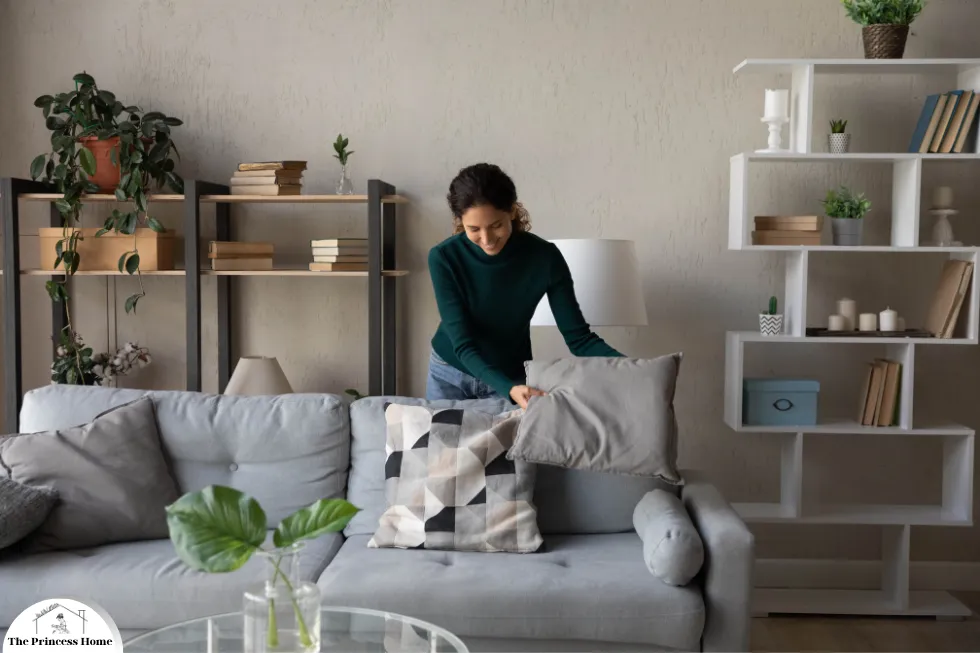
15.*Develop Healthy Habits
Clutter can often be a reflection of our daily habits. By developing healthy habits, such as putting things back in their designated place after use, you can significantly reduce clutter. Consistency in these habits will keep your environment organized in the long term. Developing healthy habits is key to maintaining an organized and clutter-free environment.
Here are some habits you can cultivate to reduce clutter and keep your space organized:
1.Put Things Back:
Get into the habit of putting things back in their designated place after each use. Whether it’s your keys, wallet, or kitchen utensils, returning items to their proper location prevents clutter from accumulating and makes it easier to find what you need when you need it.
2.Declutter Regularly:
Schedule regular decluttering sessions to review your belongings and eliminate items you no longer need or use. Set aside time each week or month to go through different areas of your home and purge items that are taking up unnecessary space.
3.Limit Incoming Items:
Practice mindful consumption by being selective about the items you bring into your home. Before making a purchase, ask yourself if the item is truly necessary and if it will add value to your life. By limiting incoming items, you can prevent clutter from building up in the first place.
4.Create Routines:
Establish daily routines that support organization and cleanliness. This could include making your bed each morning, doing a quick tidy-up before bed, or setting aside time each week for chores like laundry and vacuuming. Consistent routines help maintain order and prevent clutter from getting out of control.
5.Designate Storage Areas:
Assign specific storage areas for different categories of items, such as clothes, shoes, kitchen supplies, and office supplies. Label containers and shelves to make it easy to find and return items to their proper place. Having designated storage areas reduces clutter and promotes organization.
6.Stay Mindful:
Stay mindful of your surroundings and make a conscious effort to keep your environment tidy and organized. Take a few minutes each day to tidy up and declutter surfaces to maintain a clutter-free space.
7.Lead by Example:
If you live with others, encourage them to adopt healthy organizational habits as well. Lead by example by consistently practicing organization and cleanliness in your own daily routines.
By incorporating these healthy habits into your lifestyle, you can create a more organized and clutter-free environment that promotes productivity, peace of mind, and overall well-being. Consistency is key, so make an effort to stick to these habits over time to reap the benefits of a tidy and organized space.
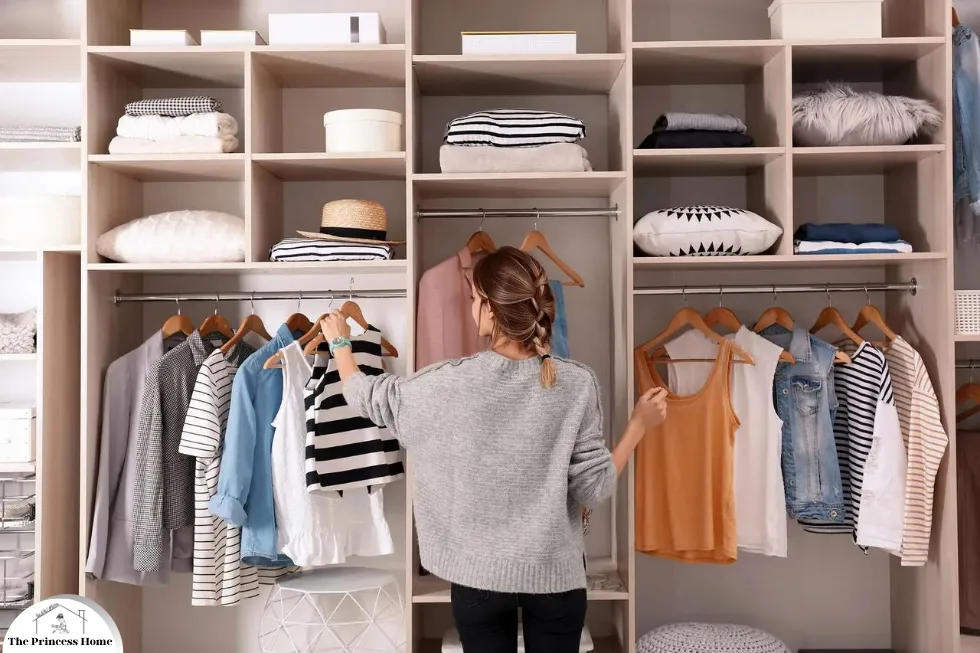
16.*Consider a Capsule Wardrobe
A capsule wardrobe is a curated collection of clothing items that can be mixed and matched to create numerous outfits. It simplifies your clothing choices, reduces the need for excess clothing, and helps you maintain a clutter-free closet. adopting a capsule wardrobe can be a game-changer when it comes to simplifying your clothing choices and maintaining a clutter-free closet.
Here’s how to create and benefit from a capsule wardrobe:
1.Curate Your Collection:
Start by selecting a limited number of high-quality, versatile clothing items that you love and that can be mixed and matched to create a variety of outfits. Aim for pieces that are timeless, durable, and suitable for your lifestyle and personal style.
2.Focus on Quality Over Quantity:
Invest in well-made, durable garments that will stand the test of time. Quality pieces may cost more upfront, but they’ll last longer and ultimately save you money in the long run. Choose fabrics that are comfortable, easy to care for, and versatile.
3.Choose Versatile Pieces:
Select clothing items that can be easily mixed and matched to create a variety of outfits for different occasions and seasons. Choose neutral colors and classic styles that can be dressed up or down and layered for added versatility.
4.Streamline Your Closet:
Once you’ve curated your capsule wardrobe, declutter your closet by removing any items that don’t fit the criteria. Donate or sell clothing that no longer serves you, and keep only the items that you love and wear regularly.
5.Rotate Seasonally:
Consider rotating your capsule wardrobe seasonally to accommodate changes in weather and activities. Store off-season items neatly packed away to keep your closet clutter-free and make it easier to see and access the clothes you’re currently wearing.
6.Mix and Match:
Get creative with mixing and matching your capsule wardrobe pieces to create new and exciting outfit combinations. Experiment with different combinations of tops, bottoms, layers, and accessories to keep your wardrobe fresh and interesting.
7.Embrace Minimalism:
Embracing a capsule wardrobe is about more than just simplifying your clothing choices—it’s also about embracing a minimalist mindset. Focus on quality, versatility, and mindfulness in your clothing purchases, and let go of the need for excess.
8.Enjoy the Benefits:
By embracing a capsule wardrobe, you’ll enjoy numerous benefits, including a more streamlined and clutter-free closet, simplified dressing routines, reduced decision fatigue, and a greater sense of satisfaction with your wardrobe choices.
Creating a capsule wardrobe takes time and effort, but the benefits are well worth it. By curating a collection of versatile, high-quality clothing items that you love and wear regularly, you can simplify your life, reduce clutter, and feel more confident and comfortable in your clothing choices.

17.*Plan Regular Decluttering Sessions
Set aside time in your calendar for regular decluttering sessions. It can be monthly, quarterly, or yearly, depending on your needs. Regular decluttering prevents clutter from becoming overwhelming and time-consuming. Planning regular decluttering sessions is an excellent strategy for maintaining a clutter-free environment and preventing overwhelm.
Here’s how to incorporate regular decluttering into your schedule:
1.Choose a Frequency:
Decide how often you’ll schedule decluttering sessions based on your needs and the size of your living space. Monthly sessions may be suitable for smaller spaces or areas that tend to accumulate clutter quickly, while quarterly or yearly sessions may be sufficient for larger spaces or less clutter-prone areas.
2.Block Out Time:
Set aside dedicated time in your calendar for decluttering sessions. Treat these sessions as non-negotiable appointments with yourself and prioritize them just like you would any other commitment or task.
3.Set Goals:
Establish specific goals or areas to focus on during each decluttering session. Whether it’s decluttering a specific room, tackling a particular category of items, or purging unused belongings, having a clear objective will help you stay focused and motivated.
4.Gather Supplies:
Before each decluttering session, gather any supplies you’ll need, such as bins for sorting, trash bags for disposal, and cleaning supplies for tidying up. Having everything you need on hand will streamline the decluttering process and make it more efficient.
5.Start Small:
If decluttering feels overwhelming, start with small, manageable tasks or areas. Focus on decluttering one drawer, shelf, or corner at a time, and gradually work your way through larger spaces. Breaking the task into smaller chunks makes it more achievable and less daunting.
6.Sort and Purge:
As you declutter, sort items into categories such as keep, donate, sell, or discard. Be ruthless in your decision-making and let go of items that no longer serve a purpose or bring you joy. Remember that decluttering is about creating space for the things that matter most to you.
7.Dispose of Clutter:
Once you’ve sorted through your belongings, take action to dispose of clutter promptly. Donate items in good condition to charity, sell valuable items online or at a garage sale, and dispose of unusable or unwanted items responsibly.
8.Maintain Momentum:
After each decluttering session, take a moment to appreciate your progress and celebrate your accomplishments. Use the momentum from your success to fuel future decluttering efforts and stay committed to maintaining a clutter-free environment.
By incorporating regular decluttering sessions into your schedule, you can prevent clutter from accumulating and maintain a tidy and organized living space. Consistency is key, so make decluttering a regular part of your routine to enjoy the benefits of a clutter-free environment year-round.
18.*Maintain a Clutter Journal
Keep a journal or digital record of your decluttering journey. Document your challenges, successes, and the emotional impact of decluttering. Reflecting on your progress can provide motivation and insight into your relationship with possessions. Maintaining a clutter journal is an excellent idea to document your decluttering journey and gain insights into your relationship with possessions.
19.*Share Your Clutter-Free Journey
Consider sharing your clutter-free journey with friends or social media. Publicly committing to decluttering can provide accountability and support. You may also inspire others to embark on their own clutter-free quests. Sharing your clutter-free journey with friends, family, or on social media can be a powerful way to stay accountable, gain support, and inspire others to embark on their own decluttering quests.
20.*Reward Yourself
Tackling clutter can be a demanding task, so don’t forget to reward yourself along the way. Celebrate your achievements as you make progress in decluttering your life. These rewards can serve as motivation to continue the process. Rewarding yourself for making progress in decluttering your life is a fantastic way to stay motivated and celebrate your achievements along the way.
Conclusion
Tackling clutter in a time-efficient way is not a one-time task but a continuous process that requires commitment and mindfulness. By adopting the strategies mentioned here, you can create a clutter-free environment that promotes mental clarity, reduces stress, and enhances productivity. Remember that the journey to a clutter-free life is a personal one, and the methods you choose should align with your individual needs and goals. Ultimately, the benefits of living with less clutter will significantly improve your quality of life and overall well-being. Start your journey today and enjoy the many advantages of a clutter-free existence!
Here are some frequently asked questions related to tackling clutter in a time.
Q1: How do I decide which items to keep and which ones to discard when decluttering?
A1: When deciding what to keep or discard, consider whether the item is still useful, adds value to your life, or has been used in the past year. If the answer is no, it’s a good candidate for decluttering. Also, consider the 4 D’s: Dump, Donate, Digitize, or Delegate.
Q2: I have a sentimental attachment to many items. How can I declutter sentimental possessions?
A2: Sentimental items can be challenging to part with. Start by selecting a few meaningful items to keep and find creative ways to display or store them. Take photographs to preserve memories. Gradually, you may feel more comfortable letting go of other items.
Q3: How do I maintain a clutter-free space in the long term?
A3: Regular maintenance is key. Plan decluttering sessions at intervals that work for you (e.g., monthly or quarterly). Develop habits like returning items to their designated places and avoiding impulse purchases. A clutter-free life is a result of ongoing effort.
Q4: What is the 80/20 rule, and how can I apply it to decluttering?
A4: The 80/20 rule, also known as the Pareto Principle, suggests that we use 20% of our belongings 80% of the time. Identify these essential items and prioritize them when decluttering. Focus on the most used possessions and consider reducing or eliminating the rest.
Q5: How can I tackle digital clutter effectively?
A5: Digital clutter can be managed by regularly cleaning out your emails, files, and apps. Unsubscribe from newsletters, delete unused apps, and organize your digital files into folders. Using technology for inventory management can also help.
Q6: What are some practical tips for maintaining a clutter-free workspace?
A6: To maintain a clutter-free workspace, organize your desk, declutter your computer desktop, and set up a system to keep things in order. Develop habits like filing documents promptly and clearing your workspace at the end of each workday.
Q7: Can professional organizers help with severe clutter problems?
A7: Yes, professional organizers can be invaluable for individuals dealing with severe clutter issues. They offer expertise, strategies, and guidance to streamline the decluttering process, ensuring that it’s efficient and tailored to your specific needs.
Q8: How can I prevent impulse buying and accumulating more clutter?
A8: To prevent impulse buying, ask yourself if an item truly adds value to your life and if you have a designated place for it. Avoid making quick decisions and give yourself a “cooling-off” period before purchasing to evaluate the necessity.
Q9: What are some rewards or incentives I can use to motivate myself during the decluttering process?
A9: You can reward yourself at various milestones in your decluttering journey. Treat yourself to something you enjoy, like a favorite meal, a movie night, or a relaxing day off. These rewards can motivate you to continue making progress.
Q10: How can I create a minimalist lifestyle to simplify my possessions and reduce clutter?
A10: To create a minimalist lifestyle, start by carefully evaluating your possessions and keeping only what truly serves a purpose or brings you joy. Embrace simplicity and avoid accumulating excess items. Minimalism encourages you to focus on what truly matters.
These answers should provide guidance on some of the common questions and concerns that arise when tackling clutter efficiently. Remember that decluttering is a personal journey, and there’s no one-size-fits-all approach. Find the methods and strategies that work best for you, and take it one step at a time.


